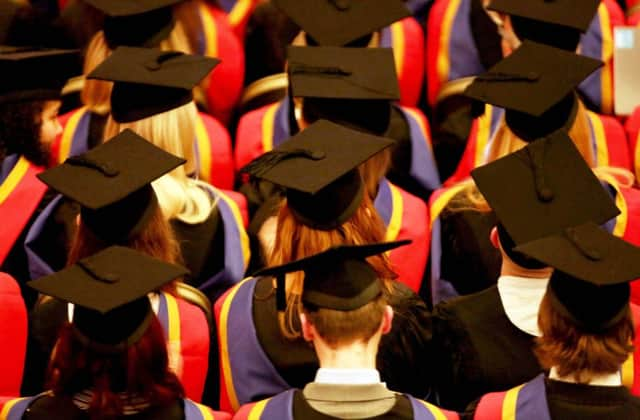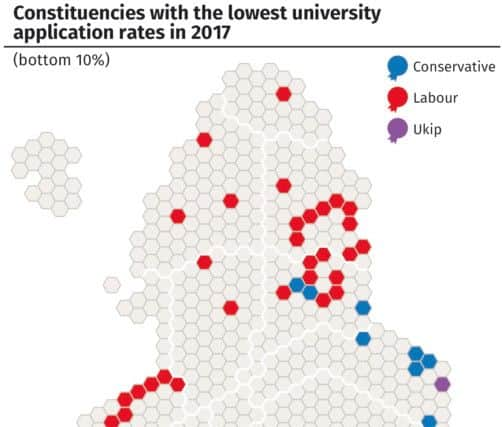Miles apart: Yorkshire's education gap laid bare


Across the country, the “education gap” is even greater, with youngsters’ expectations of studying for a degree often predetermined by where they live.
Despite the government’s insistence that demand for places is at “record levels”, the proportion of students aspiring to higher education has fallen in some areas, in the space of a decade.
Advertisement
Hide AdAdvertisement
Hide AdLarge swathes of Yorkshire languish in the bottom 10 per cent of a table published this morning, which measures application rates for universities, and the figures reveal stark differences within individual cities.


Sheffield Hallam, the affluent area to the west of the city centre, represented by the former Liberal Democrat leader, Nick Clegg, is the parliamentary constituency with the highest proportion of university applications outside London and the south east - some 58 per cent of eligible students.
But the neighbouring Sheffield Central area records one of the lowest rates, with only one teenager in four applying.
A similar inequality is revealed in Leeds, with teenagers in the leafy north east of the city, including Moortown and Chapel Allerton, nearly three times as likely to seek a place as those two miles down the road in the Leeds Central constituency, the lowest-ranked in the region, where fewer than one in five apply.
Advertisement
Hide AdAdvertisement
Hide AdApplication rates in Labour-held constituencies in parts of Hull, Grimsby, Barnsley, Scunthorpe, Doncaster and Rotherham are also in the country’s bottom 10 per cent, with fewer than one teenager in four seeking a place.


In contrast, the Conservative-held seat of Wimbledon in south-west London, saw more than 70 per cent of youngsters competing for a place.
While the vast majority of constituencies have seen a rise in applications since 2007, 13 are seeing fewer youngsters going to university than they were a decade ago.
The figures prompted calls last night for more action to improve the lot of students in under-performing areas.
Advertisement
Hide AdAdvertisement
Hide AdNicola Dandridge, chief executive of Universities UK, an advisory group set up last year to look at application rates, said it was acknowledged that disadvantage was “ deeply entrenched in our society”.
She said: “While the economic and social position of a student’s family has the greatest impact on their access to university, the geographical location of where they live is also increasingly being recognised.”
She added that while there were “no quick and easy solutions”, universities would have to “work even more closely with schools and colleges in a range of ways”.
Sir Peter Lampl, founder of the Sutton Trust charity, which campaigns against educational inequality, said: “The massive difference in the numbers going on to university between the top and bottom constituencies reflects the fact that the chances of getting to university are very much dependent on where you live and where you go to school.”
Advertisement
Hide AdAdvertisement
Hide AdMalcolm Trobe, of the Association of School and College Leaders, said: “These figures suggest that university applications are higher in more affluent constituencies and lower in those with more disadvantage, and therefore reflect the well-known link between socio-economic inequality and educational attainment.”
He said that while schools in “challenging areas” were working hard to close the attainment gap, “the education system cannot solve the impact of significant socio-economic inequality on its own”.
Mr Trobe said: “There are a range of social factors which must also be addressed in disadvantaged areas, such as improving the provision of secure, well-paid employment, and good-quality, affordable housing.”
The Department for Education said application rates for 18-year-olds and poorer youngsters were at record levels.
A spokesman said: “The reforms we are bringing in through the Higher Education and Research Bill will mean even more people can benefit from a university education.”